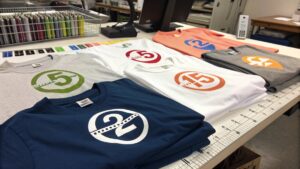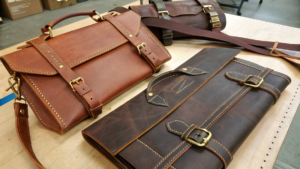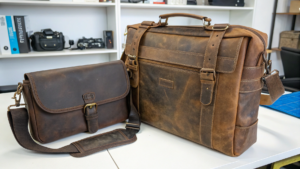Why is Printing a Photo on a T-Shirt More Than Just Ink?
Are you thinking about putting a favorite photo on a T-shirt? It's more than just a picture. It's a memory. It's a feeling.
Printing a photo on a T-shirt is more than just ink because it transforms a cherished memory or meaningful image into a wearable piece of art, creating a personal connection and allowing the story behind the photo to be shared and celebrated.
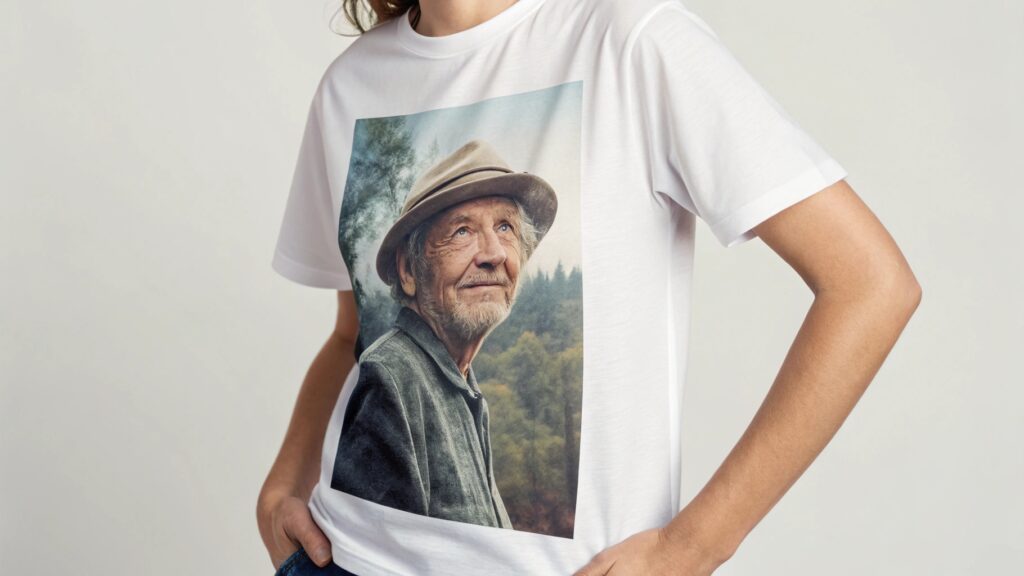
For me, a photo on a T-shirt is special. It’s not just about the image. It’s about the memory it holds. It’s about sharing something meaningful.
How much does it cost to print a photo on a shirt?
Are you wondering about the cost of putting your favorite photo on a shirt? Prices can change. They depend on many things.
The cost to print a photo on a shirt1 varies widely, typically ranging from $15 to $50 per shirt, depending on the printing method chosen, the complexity of the design, the shirt material, the quantity ordered, and the specific print shop's pricing.
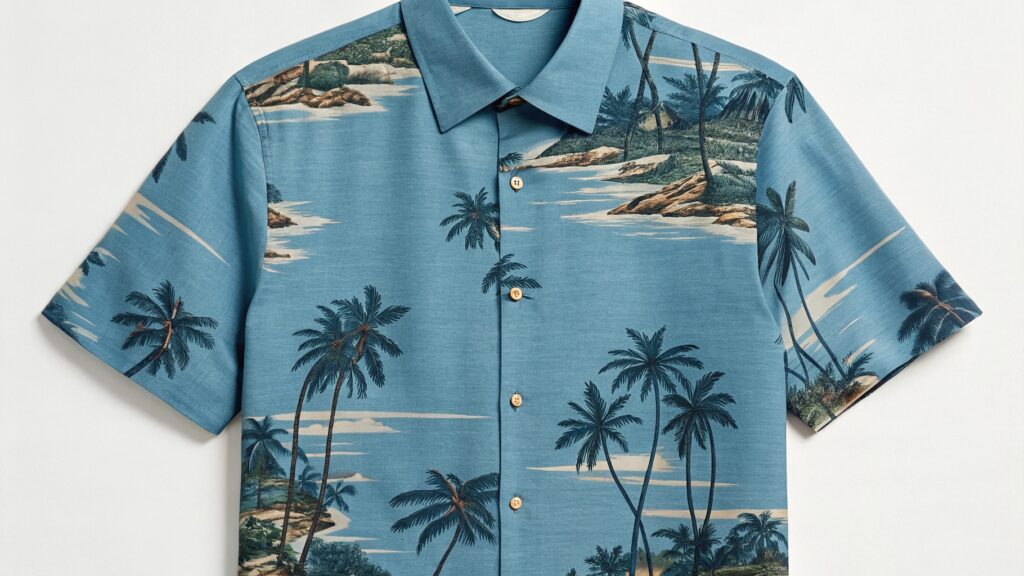
Why do printing methods affect cost?
Different printing methods2 have different costs. Direct-to-Garment (DTG) printing is often used for photos. It has no setup fees for screens. This makes it cost-effective for one or two shirts. The price per shirt might be higher than other methods for bulk orders. But for single items, it's very efficient. Sublimation printing is another option for photos, especially on polyester shirts. It also has low setup costs. The ink dyes the fabric, so it's very durable. However, it only works on light-colored polyester. Heat transfer (like iron-on transfers) can be the cheapest for DIY. But professional transfers cost more. I have seen that for photo prints, the best method for quality often comes with a higher price tag. This is because specialized equipment and inks are needed to capture fine detail and vibrant colors. The technology required for high-resolution photo prints means more advanced machinery and specialized inks, which are reflected in the per-unit cost.
| Printing Method | Typical Cost Range (per shirt) | Best For | Quantity Considerations |
|---|---|---|---|
| DTG (Direct-to-Garment) | $20 - $40 | Single shirts, complex photos | Cost-effective for low quantities |
| Sublimation | $18 - $35 | Polyester, vibrant photos | Best for light-colored fabrics |
| Heat Transfer (Pro) | $15 - $30 | Simple photos, small runs | Can be labor-intensive for bulk |
| Screen Printing | $10 - $25 (for many colors) | Not ideal for photos, costly for many colors | Cost-effective for large quantities of simple designs |
How does quantity change the price?
The quantity of shirts you order greatly changes the price per shirt. For most printing methods, the more shirts you print, the lower the cost per shirt becomes. This is because of "setup costs." For example, with screen printing, setting up the screens is a fixed cost. If you print one shirt, that setup cost is very high per shirt. If you print 100 shirts, the setup cost is spread out. This makes each shirt much cheaper. Even for DTG or sublimation, there are economies of scale. Buying blank shirts in bulk is cheaper. Processing many shirts at once is more efficient. I always advise clients to consider their total need. Ordering more at once often saves money in the long run.
Why do shirt material and color matter for cost?
Shirt material and color affect the cost of printing. Printing on special fabrics, like blends or performance wear, can be more expensive. These fabrics might need different inks or treatments. The color of the shirt also matters. Printing a full-color photo on a dark shirt usually costs more than on a light shirt. This is because dark shirts often need a white base layer of ink first. This makes the colors stand out. This extra layer uses more ink. It also takes more time. For sublimation, you must use light-colored polyester shirts. Printing on cotton or dark shirts is not possible with this method. I always confirm the shirt type and color with my clients. It ensures the best result for their budget.
What equipment is needed to print on T-shirts?
Are you curious about what goes into printing a photo on a T-shirt? It's not just a printer. It takes special tools.
To print on T-shirts, essential equipment includes a T-shirt printer (like a DTG printer or sublimation printer), a heat press, graphic design software, and the appropriate inks or transfer papers, alongside blank T-shirts.
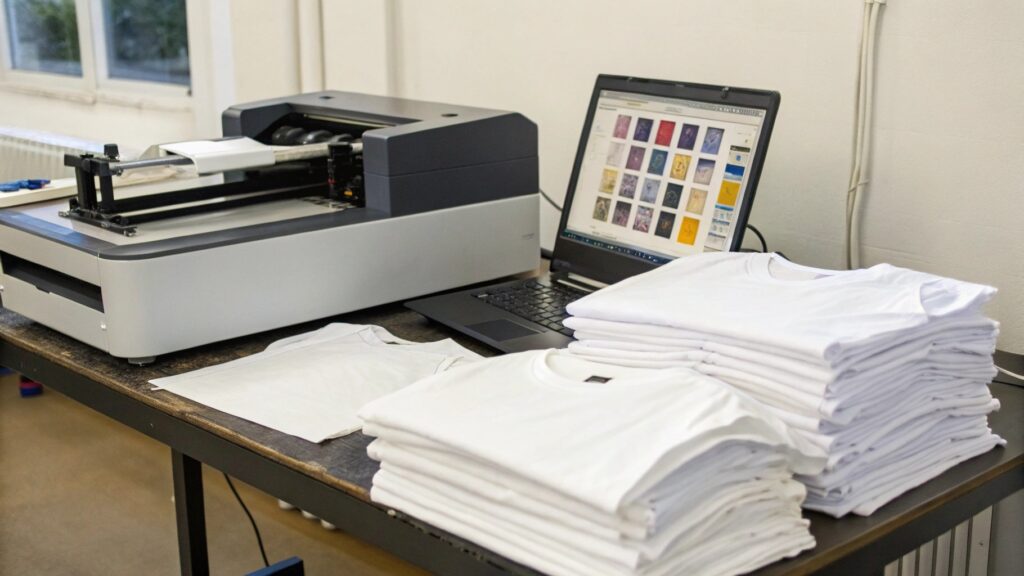
How does a DTG printer work?
A DTG printer3 (Direct-to-Garment printer) is like a large inkjet printer. But it prints directly onto fabric. You load the T-shirt onto a platen. The printer then sprays the ink onto the shirt. It can print full-color images. It captures fine details. This is why it is great for photos. After printing, the shirt usually needs to be cured with a heat press. This makes the ink permanent. I have seen how these printers can turn a digital image into a wearable piece of art. They are complex machines. But they make high-quality photo prints easy. They allow for great flexibility and creativity in design. This technology offers incredible precision and color accuracy, essential for reproducing photographic images faithfully onto fabric.
| Equipment Type | Primary Function | Role in Photo Printing |
|---|---|---|
| DTG Printer | Prints ink directly onto fabric. | High-resolution photo prints on cotton. |
| Sublimation Printer | Prints special ink onto transfer paper. | Vibrant, durable photos on polyester. |
| Heat Press | Applies heat and pressure to cure ink/transfer designs. | Essential for permanent prints with DTG/sublimation/heat transfer. |
| Computer/Software | Design creation and file preparation. | Prepares image for printing, ensures color accuracy. |
| Inks/Transfer Paper | Medium for transferring image to shirt. | Crucial for color vibrancy and print durability. |
| Pre-treatment Machine | Applies liquid to dark shirts for DTG printing. | Ensures white ink stands out on dark fabrics. |
What is the role of a heat press?
A heat press is a very important piece of equipment. It looks like a large iron. But it applies precise heat and pressure. For DTG printing, it cures the ink. This means it makes the ink permanent. It bonds it to the fabric. For sublimation printing, it transfers the image from the special paper onto the polyester shirt. The heat turns the solid ink into a gas. This gas dyes the fabric. For heat transfers, it melts the transfer material onto the shirt. Without a heat press, most professional T-shirt prints would not be durable. It is the final step that ensures the quality and longevity of the printed photo. This controlled application of heat and pressure is crucial for activating the inks or adhesives, ensuring a vibrant, long-lasting, and wash-resistant print that maintains its integrity over time.
Why is pre-treatment important for dark shirts?
Pre-treatment is very important when printing photos on dark T-shirts with a DTG printer. Dark shirts need a white base layer of ink before the colors are printed. This white layer makes the colors stand out. Without it, the colors would look dull. Pre-treatment is a special liquid that is applied to the shirt before the white ink. It helps the white ink bond to the fabric. It also prevents the white ink from bleeding. This creates a smooth surface for the colors. After pre-treatment, the shirt is often dried with a heat press before printing. I know from experience that skipping this step can ruin a photo print on a dark shirt. It ensures the final image is vibrant and clear.
Which printing method is best for photos?
Are you trying to pick the best way to get your favorite photo onto a T-shirt? Not all methods are equal for pictures.
Direct-to-Garment (DTG) printing is generally considered the best method for printing photos on T-shirts, offering high detail, full-color range, and a soft feel, especially on cotton fabrics. Sublimation is also excellent for photos but is limited to light-colored polyester shirts.

Why is DTG ideal for photo detail?
DTG printing is ideal for photo detail because it can reproduce very fine lines and a wide range of colors. It works like your home paper printer. It sprays tiny dots of ink onto the fabric. This allows for smooth color gradients. It captures all the nuances of a photo. It can print millions of colors. This is perfect for complex images. It keeps the clarity of the original photo. Unlike screen printing, which uses a limited number of colors, DTG can handle unlimited colors without extra cost. This means your photo looks exactly as it should. I rely on DTG when precision and color accuracy are most important for a photo print. This method excels at rendering subtle variations in tone and texture, preserving the emotional depth and visual fidelity of your photographic memories.
| Photo Printing Method | Pros | Cons | Ideal Fabrics |
|---|---|---|---|
| DTG | High detail, full color, soft feel, good for small runs | Higher cost per shirt for bulk, best on cotton | 100% Cotton, high-cotton blends |
| Sublimation | Vibrant colors, durable (no-feel print), won't crack/fade | Only on light polyester, can't print white ink | 100% Polyester (light colors) |
| Heat Transfer | Versatile, good for small runs, simple photos | Can feel stiff, less durable over time, prone to cracking | Cotton, blends |
When should I choose sublimation for photos?
You should choose sublimation for photos when you need unmatched durability and vibrant colors on polyester shirts. Sublimation ink actually becomes part of the fabric. This means the print won't crack, peel, or fade. It has no "feel" to it. It's truly embedded. This makes it great for athletic wear or items that will be washed often. However, it only works on light-colored polyester fabrics. It cannot print white ink. Any white in your design will be the color of the shirt. If your photo is going on a light-colored polyester shirt, sublimation is an excellent choice for a long-lasting, high-quality result. I often recommend it for sports jerseys or vibrant, all-over photo designs.
Why is respecting the memory important in printing?
Respecting the memory is important in printing a photo. A photo on a T-shirt is not just a commercial product. It carries emotional weight. It is a piece of significance. The printing method you choose should match the longevity and clarity that the memory deserves. If it's a cherished family photo, you want it to last. You want it to look clear. Choosing a method like DTG or sublimation ensures that clarity and durability. A faded, cracked print undermines the memory. It shows a lack of care. I believe a meaningful image deserves more than just convenience. It deserves quality. It deserves respect for what it represents. This thoughtful approach ensures that the wearable memory endures, allowing the story and emotion behind the photograph to continue touching hearts for years to come.
Conclusion
Printing a photo on a T-shirt is about more than just technique. It's about preserving memory. Choose wisely. Ensure your story lasts.
-
Explore this link to understand the various factors influencing the cost of printing photos on shirts, ensuring you make an informed decision. ↩
-
Learn about various printing methods to choose the best one for your T-shirt design, ensuring quality and cost-effectiveness. ↩
-
Discover the technology behind DTG printers and how they produce high-quality prints, perfect for your photo T-shirts. ↩

